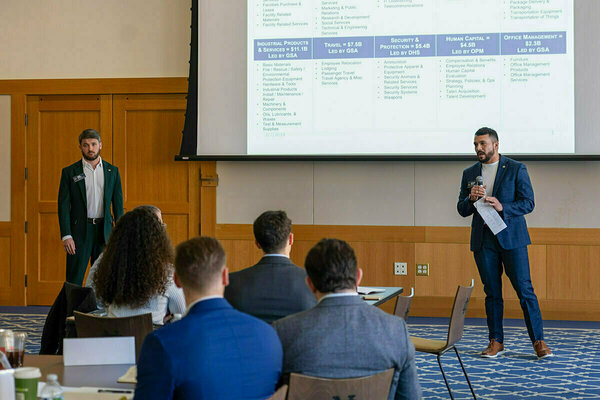When countries hide their true public debt, they hurt themselves, their citizens and their lenders

Economists from the International Monetary Fund (IMF) recently announced that global public debt would soon collectively catch up to the worldwide gross domestic product (GDP), likely matching it by 2030. New research from the University of Notre Dame suggests that this could happen even sooner, thanks to countries’ hidden debts.
These hidden debts — debt that was already in a government’s books but had not been disclosed — are the result of malicious intent or corruption, fear of scrutiny by lenders or simple accounting errors. Too much debt prevents governments from investing in the things its citizens need most, including infrastructure, health care and education.
Monitoring a country’s debt level is also top of mind for investors and analysts who want to ensure the lendability and dependability of a borrower.
But revelations of hidden debt have dire consequences for those misreporting borrowers and those who lend to them.
According to a new study from an economist at the University of Notre Dame, misreported debt can lead to higher interest rates for borrowers and lower recovery rates for lenders. These findings suggest indirect adverse effects on global financial stability and consumer welfare.

Cesar Sosa-Padilla, associate professor of economics and a faculty fellow at the Kellogg Institute for International Studies, part of Notre Dame’s Keough School of Global Affairs, along with co-authors from the World Bank, the University of Hamburg and the University of Duisburg-Essen, authored a working paper published by the National Bureau of Economic Research titled “Hidden Debt Revelations.” The researchers used the World Bank’s International Debt Statistics database to measure the accuracy of reported debt levels spanning more than 50 years for 146 developing and emerging market countries.
The researchers tracked revisions to the World Bank’s external-debt statistics database, which compiles reports from all countries that borrow from foreign lenders, from 1970 through 2022. Each revision showed discrepancies when compared to the previous year’s data, indicating an underreported or overreported debt amount. Their research method, which also included digitizing records that preceded online capabilities, revealed several facts regarding the size, timing and characteristics of hidden debt, according to Sosa-Padilla.
They found that public debt is consistently and pervasively underreported — by an average of 1 percent of each country’s GDP, totaling $1 trillion of hidden debt across all countries and years and equating to more than 12 percent of total foreign borrowing by all countries in the study sample.
“Hidden debt is large and common,” the researchers wrote, with 70 percent of all debt stocks reported to the World Bank requiring amendments at least once after their initial publication. And most of those revisions, Sosa-Padilla explained, involve an adjustment upward versus downward when reporting true public debt — indicating that underreporting occurs more often than not.
These hidden debts can only be counted when they are revealed through a revision, so it is likely that some countries’ debts are actually larger than they are willing to admit, he said.
“We find that public external debt is consistently underreported, and that this phenomenon is more prevalent in countries with weak institutions,” Sosa-Padilla said.
The reporting discrepancies were most often found during bad economic years, according to Sosa-Padilla. “The accumulation of debt that was not reported usually happened during boom years,” he said, “while the revelations of that hidden debt occurred during bad economic years.”
These hidden debt revelations typically occurred when the government’s books came under close scrutiny due to loan defaults or during audits from the IMF, a multilateral organization set up to assist countries on the brink of financial crisis. The United States is the largest shareholder in the IMF.
The researchers also found that hidden debt can have adverse implications for both creditors and borrowers. For creditors, it means larger creditor losses and a lower recovery rate on loans provided to a country that is further in debt than expected. In turn, having less chance to recoup funds during the renegotiation process leads creditors to pass along less-advantageous borrowing terms to those countries seeking loans.
“Theoretically, when a country has a history of hiding its debt, it not only faces higher interest rates from foreign lenders, but it also has less ability to smooth out consumption or stabilize fluctuations in its economy,” Sosa-Padilla explained. “Essentially, it leads to a more volatile path of consumption levels, which can trickle down to affect consumer households.”
For American consumers in particular, Sosa-Padilla said that hidden debt revelations make investing in foreign bonds much riskier than originally thought. Also, as one of the IMF’s largest contributors, U.S. funders may take extra care when considering providing funds to countries that consistently misreport their economic health.
Bonds, which are publicly traded, and World Bank-provided loans have fewer incidents of misreporting as those debts are consistently disclosed. The largest revisions to yearly debt levels occur within less transparent markets, such as with borrowed funds coming from private lenders in the form of bank credit or from governments as bilateral loans.
On this point, and using a quantitative model of sovereign borrowing and default, the researchers took into account the amount of oversight and transparency that is required when it comes to monitoring each country’s forthrightness in debt reporting, saying that “only countries with strong fundamentals and low hidden debt levels benefit from increased transparency” while countries with high levels of hidden debt are “likely to find exposure to greater scrutiny to be costly.”
For that reason, the study’s findings suggest that transparency policies are best implemented during positive economic times versus times of financial crisis.
“Analysts in both asset pricing and country surveillance should take into account that debt statistics tend to increase after their initial publication, which makes default more likely,” Sosa-Padilla concluded.
Contact: Tracy DeStazio, associate director of media relations, 574-631-9958 or tdestazi@nd.edu
Originally published by at news.nd.edu on November 07, 2024.
Latest Research
- Fighting for maternal healthThe United States has the highest maternal mortality rate of developed nations. An innovative postpartum care model from Notre Dame can save mothers around the globe. Read the story Originally…
- NSF Cyber SMART’s fall meeting shapes fifth year of project, legacy and future plans, and adds new memberThe U.S. National Science Foundation (NSF) Cyber SMART center gathered for its fall meeting on the University of Notre Dame campus this September. The meeting served as a checkpoint with progress reports and new projects from research leads and students…
- Slavic and Eurasian studies professor wins Humboldt fellowship to research how Russia’s religious past shapes its presentWhen Russia invaded Ukraine on Feb. 24, 2022, Sean Griffin realized his second book needed a new title. Griffin, an associate professor in the University of Notre Dame’s Department of…
- Notre Dame’s R.I.S.E. AI Conference builds interdisciplinary collaboration to inform human-centered artificial intelligenceAs artificial intelligence (AI) transforms nearly every sector of society — from healthcare and education to governance and global development — a critical question emerges: How can we conscientiously design and deploy these powerful technologies to positively impact society? This…
- University of Notre Dame joins the Global Coalition of Ukrainian StudiesThe University of Notre Dame has joined the Global Coalition of Ukrainian Studies after signing a Memorandum of Cooperation (MOC), formalized on September 24, 2025, at the Ukrainian Institute of America in New York City. Notre Dame joined four other American…
- The University of Notre Dame’s Mendoza College of Business and Industry Labs team up to inspire national security manufacturing competitiveness in the regionThe South Bend - Elkhart Region is full of manufacturing companies that are poised to grow, and Executive Master of Business Administration (EMBA) and Master of Business Administration (MBA) students at the University of Notre Dame are finding innovative ways to contribute to that growth. Earlier…













